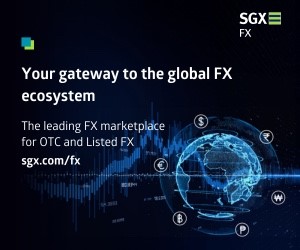The Last Look…
Posted by Colin Lambert. Last updated: September 26, 2023
The latest changes announced by EBS to its primary FX trading venue are interesting, because they could be viewed as not only a reversal of more recent thinking, but also of a change in direction regarding who the platform is trying to keep happy. Perhaps more interesting, however, will be the market’s reaction to them.
EBS has faced a huge challenge over the past decade or so as the twin pressures of increased internalisation and greater competition had an impact on the business. It has also faced questions from certain market participants over the quality of its ecosystem. This has seen the firm toy with changes that have very much been targeted at improving market quality, a theme that has permeated the broader platform market for some time now. The latest changes at EBS Market, however, could be viewed a reversal of that philosophy, certainly they are an attempt to leverage the technological improvements brought about by the Globex migration.
Of course, at heart, all changes, whether to encourage “better” behaviour (it’s a very subjective thing) or to leverage technological enhancements, are aimed at improving the ecosystem, as reflected by increased volumes and firms still paying for market data, but it is interesting that EBS has returned to what has previously been a controversial path. Equally, do the latest changes reflect a changing attitude towards its client base as well as the broader “corporate” view from its parent company?
At the heart of the matter is the changing nature of the major participants on platforms like EBS Market. The RFS-style venues continue to be bank-dominated, but is it the same in the CLOB/ECN world? Talking to people at the platforms, they often point out that the top LPs are a mix of bank and non-bank firms, and that the reduction in average ticket size, along with the growth in algos executing into the market have meant that smaller, more frequent, LPs have gained traction on their venues, especially at the expense of the lower tier banks.
Effectively, the banks, when it comes to the CLOB/ECN markets, have become less relevant as a group. Now before everyone jumps on me, yes, I know that the banks handle the vast majority of FX volume – and I remain solidly in the camp that believes without a strong banking presence in FX markets, the industry will be poorer off. In the public markets, however, such as on the CLOBs and ECNs, the role of the banks has been much reduced. It is probably of some significance that the parent company’s FX business was largely built upon smaller trading firms – yes, the banks play a role on CME, but are they dominant? It’s hard to tell, but anecdotally the suggestion is they are not.
The question is, do the changes at EBS reflect this changing demographic? The sense is that they do, because faster market data and more granularity in pip increments have, historically, been anathema to the banks, but often supported by non-banks (and yes, this is a sweeping generalisation, but overall, I think it’s accurate).
None of this should suggest that EBS cares less about the banks, more that the changes reflect the reality of who is doing what on the platform. It is fair to ask whether the banks, collectively, have done enough to support previous changes? While the volume data would suggest not, the fact is they are still paying for the market data, so, yet again in this market, there is no obvious answer.
A new, faster, market data service is also likely to be a reaction to potential challenges from elsewhere, with platforms such as LMAX Exchange and Euronext FX touting real-time data feeds. Talking to participants there is a widespread belief that EBS Ultra comes at a premium, in terms of cost, therefore it makes sense to leverage technological enhancements to deliver it faster to those who want it. Importantly, minimum trade sizes have not come down, should that have been part of the changes, concerns would have been raised over the quality of the market data, which could have been consumed in a frenzy of white noise from hundreds of thousands of small, relatively insignificant, trades.
A sobering truth for CME as owner of EBS – is that the market data and brokerage business lines are unlikely to ever be mutually successful
Ultimately, the changes, especially faster market data, and reduced MQLs, can be seen as very much looking to protect the LPs, and that goes across both banks and non-banks.
Perhaps the big question is can they reverse the long-term decline in volumes? I have written before that both “primary” venues may have hit their lows in terms of volume levels – there is always a core amount of volume from exhaust flows which naturally gyrates to a no-last look venue – but that is different to them rebounding strongly.
There is also an interesting juxtaposition between what seems to be genuine interest in the dark pool concept, with minimum (larger than average) amount qualification thresholds, and a primary venue reducing the incremental pip regime, which is largely seen as benefiting smaller traders. Of course, there is also an argument that EBS is competing on tilted playing field, when much of its competition is already at tenths of a pip, so such a move is a step in the right direction and may even be insufficient.
There is a school of thought that EBS Market, and to a degree Matching, needs to decide whether it wants to be a market data or a brokerage business, but that just doesn’t work in my mind, because one has to lead to the other. It’s no good trying to sell market data if you have no volume to feed off. The problem lies in what is a sobering truth for CME as owner of EBS – the two business lines are unlikely to ever be mutually successful.
As a major market data source, traders are reluctant to put the type of order into EBS Market that the platform desires because of information leakage. Many traders tell me, repeatedly, that EBS Market (and Matching to a smaller degree and on a geographical basis) are the last place they will post interest because the data is broadcast to every other LP, who adjust their pricing accordingly and create market impact. Smart execution has always dictated you go to the public market last, and if one or two venues are more prominent than others, they are even further down the ladder. Smart order routers dominate FX activity these days, and they know this – the data tells them so – therefore, this flow is unlikely ever to return to the primaries.
On a more positive note, one question has been answered in these moves, however, that of CME’s intentions over EBS Market. Some of the moves made by the Merc since buying EBS have raised eyebrows in some quarters, notably the decision to move the matching engines to New York and London for spot and NDFs. Some have suggested to me that the real end-goal for CME in buying EBS is to migrate as much of the Market volume to futures and make that venue the primary market data source, while building up EBS Direct. In this way, it is argued, the CME FX business will more reflect those of its rivals, but with the addition of a very strong CLOB, doing volumes last seen on the primary venues almost a decade ago.
The FX market has evolved and the no-last look CLOB has a smaller role to play in it, that is a fact, and no end of changes will bring about a return to the glory days
If that was the plan, then I would suggest CME would not be spending money on enhancements to EBS Market at this stage, rather it would let the platform wither and die, while focusing everything on the relationship platform. Of course, whether the changes work will only be seen as time progresses, but I remain firm in the belief that the spot FX market will not be futurised, therefore a healthy OTC CLOB is vitally important for CME’s overall FX business.
EBS Market has been a challenge for its owners from before CME ownership as the aforementioned market structure changes, especially internalisation in its core currency pairs, evolved. It remains an important element of the business, however, and should, as I wrote a few weeks back, probably be better aligned, but not merged, with the cleared business.
The changes announced this week do suggest a shift towards a more aligned technological performance on CME’s FX platforms – inevitable when Globex is the tech stack for both – but should not divert attention away from the fact that CME needs a healthy EBS Market in its product suite.
Ultimately, I don’t think opinions on the success or otherwise of EBS Market (and LSEG Matching) will alter until as an industry we adjust our expectations. Just as I believe the mid-2010s were the outlier in terms of low volatility, the five-year period around the start of this century’s second decade were probably also an outlier in terms of primary venue performance.
The FX market has evolved and the no-last look CLOB has a smaller role to play in it. That is a fact, and no end of changes will bring about a return to the glory days. After all, even CME FX futures, after a bumper four years from 2010-2013 when it averaged around the $110 billion per day mark, has failed to come close to the $100 billion threshold since – indeed 2021 notional ADV was the lowest since 2007.
So things have changed, but unless or until market participants start getting their data elsewhere, the primary venues will still have a role to play – it’s just reduced. Any changes made at these venues are going to be, therefore, largely window dressing, with a marginal impact, although that doesn’t make them any less important.
Of course, the ultimate test for these changes will be how market participants react. Given the changes in structure over the years, and the reduced volumes on these venues, perhaps the most notable reaction will be a shrug of the shoulders? That too, will reflect the changed circumstances and the new reality.



